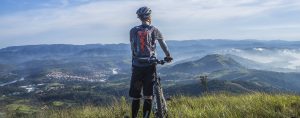The wildfires currently engulfing the Brazilian and Bolivian sections of the Amazon Forest, with which scientists expect to see huge amounts of biomass burning that can cause greater environmental problems. That is because biomass burning (BB) produces emissions of gases and aerosol particles that can adversely impact health, visibility and cause further changes in both local and global climates.
Tarballs, the dominant and light-absorbing aerosol particles present in BB smoke are known to create a negative impact on the Earth’s climate. Yet exactly how tarballs are formed and the scope of its influence on climate change are questions that still call for clear answers.
Kouji Adachi, a senior researcher at the Meteorological Research Institute in Tsukuba, Japan, and Professor Peter Buseck of the Schools of Molecular Sciences and Earth and Space Exploration at the Arizona State University are currently collaborating on the study of tarball particles and their potential effects on climate change.
Actually, their collaboration will expand the range and diversity of Buseck’s previous research on BB burning and resulting tarball formation.
The current study conducted by Adachi and Buseck revealed tarball formation processes, as evidenced by microphysical and chemical analyses. The findings can improve interpretations of BB smoke, when captured as sattelite and ground-base data feeds. The tarball shape, compositional changes during aging, and their viscosity can furnish better estimates of their impact in climate models.
Background of Professor Buseck’s Earlier Assessments of Biomass Burning
Professor Buseck, is the recipient of this month’s 2019 Roebling Medal, the highest award bestowed for outstanding original research in mineralogy by the Mineralogical Society of America. The ASU professor and his group had previously developed a unique and interesting method in the use of transmission electron microscopy, as a means to study shapes and compositions of more than 10,000 particles.
Tarballs were analyzed for chemical compositions with the use of scanning transmissions obtained from X-ray spectroscopy. Buseck’s research team had studied tarballs collected from the Biomass Burning Observation Project (BBOP) that was held in the U.S. in the summer of 2013. The purpose of which was to acquire better insights on how aerosol particles generated by biomass fires affect climate and the atmosphere.
The project estimated that about 40% of carbonaceous aerosol particles (tarballs) present in the atmosphere are results of biomass burning. The huge proportion of tarball composition in the Earth’s atmosphere has potential effects that can alter regional and global climates.
Tasball assessments revealed tarball increase in direct relation to a particle’s age. Moreover, the ratios of oxygen and nitrogen in tarball, as relative components of potassium, and a particle roundness, can also increase when a particle ages.

